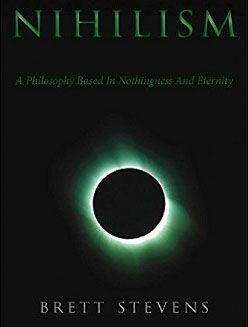A tale of two realities
 We enter into a petit schizophrenia the instant we use symbols for reality. The symbol can never be what it refers to, even when we speak of the symbol itself; we create a new instance each time we speak.
We enter into a petit schizophrenia the instant we use symbols for reality. The symbol can never be what it refers to, even when we speak of the symbol itself; we create a new instance each time we speak.
When we speak with others, we enter into an alternate reality. They vocalize symbols directly into our minds. We then act on those symbols as if real.
This is a force multiplier. It lets us be more effective, but like any powerful tool, it can become a weapon when pointed in a paradoxical direction (a form of sabotage). There are no wrong hands, but there are conflicting goals.
Jane Elliott told her pupils a pseudo-scientific explanation of how eye colour defined people: blue eyes showed people who were cleverer, quicker, more likely to succeed. They were superior to people with brown eyes, who were described untrustworthy, lazy and stupid1. She then divided the class according to who had brown eyes and who had blue eyes. To ensure clarity of divisions – given that some eye colours might be subject to dispute, she used ribbons to mark out the ‘inferior’ brown-eyed children (those with clearly different eye colours acted as bystanders). To reinforce the situation, she gave the superior group extra classroom privileges, and would not let the brown-eyed children drink from the same water fountain. She made a point of praising the blue-eyed children, and being more negative to the browns.
Jane Elliott was amazed at the speedy transformation in her class. The superior blue-eyed children became arrogant, and were bossy and unpleasant to their brown-eyed class mates. The brown eyes quickly became cowed and timid, even those that had previously dominated the class. But what really astounded Jane was the difference academically. Blue-eyed children improved their grades, and managed mathematical and reading tasks that had proved out of their grasp before. Brown-eyed high-flyers stumbled over simple questions.
{…}
Jane Elliott had proved – more dramatically than she had ever thought possible – how much discrimination is soaked up subconsciously, by both the oppressor and the oppressed. She had not told her pupils to treat each other differently, only that they were different; and yet they developed the characteristic responses of discrimination.
1 This is, of course, false. Determination of eye colour is affected by melanin, and has nothing to do with a person’s intelligence, honesty or worth. – BBC
I sing a song of contradiction:
The colour of your eyes could determine your achievements in life, say scientists.
They claim those with blue eyes are more likely to sparkle academically than those with brown.
They are more intelligent and gain more qualifications because they study more effectively and perform better in exams.
{…}
In reaction time trials conducted by U.S. scientists, the brown-eyed performed better, making them more likely to succeed at activities such as football, hockey and rugby.
But the researchers concluded that those with lighter eyes appeared to be better strategic thinkers.
Blue-eyed boys and girls proved to be more successful in activities that required them to plan and structure their time, such as golf, cross-country running – and studying for exams. – The Daily Mail
I wonder which is closer to reality.









